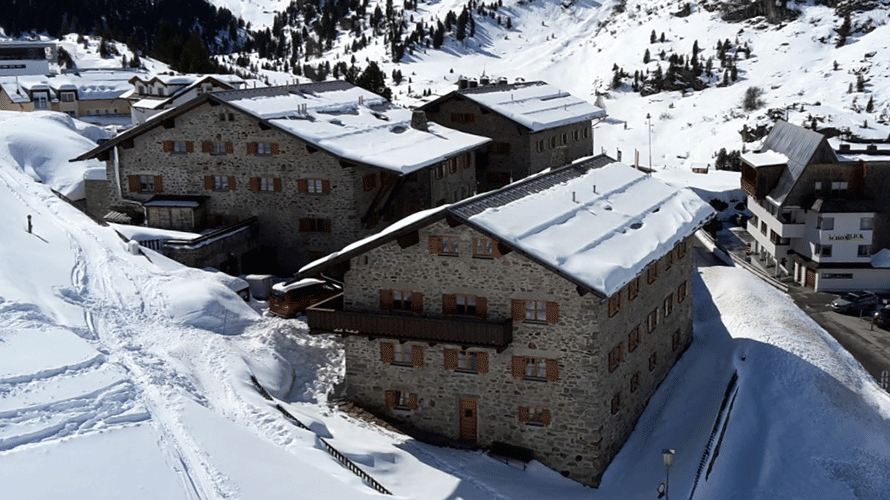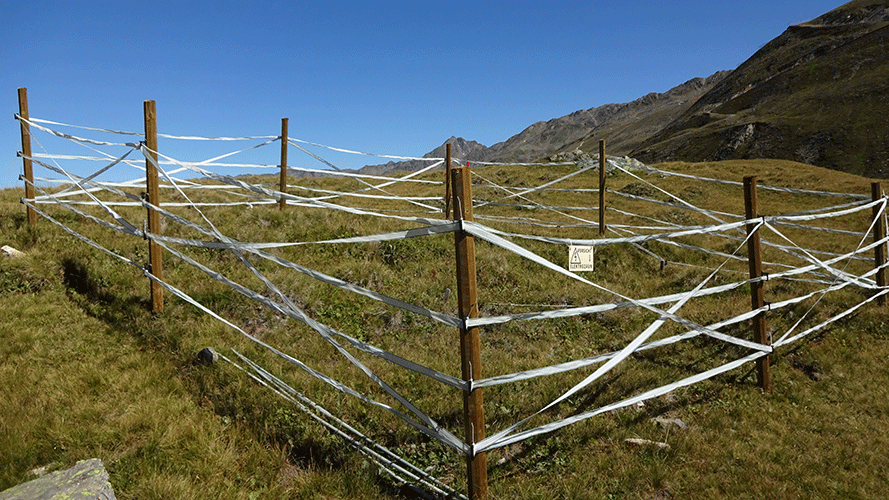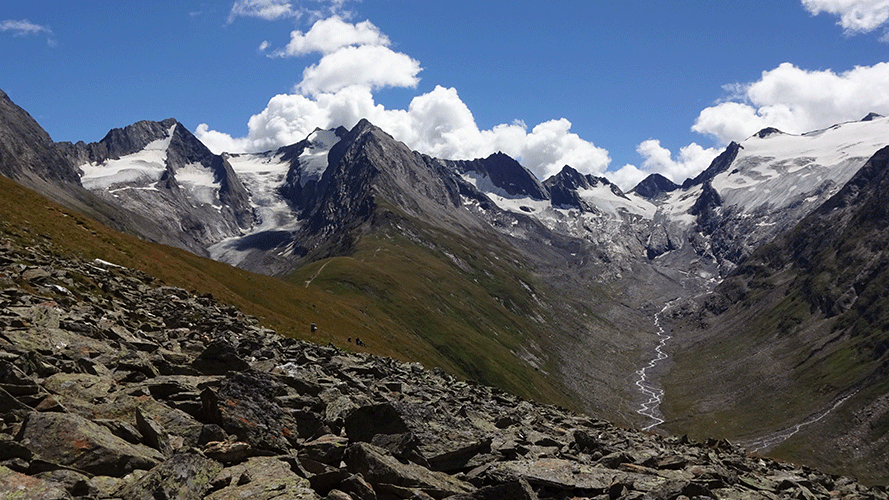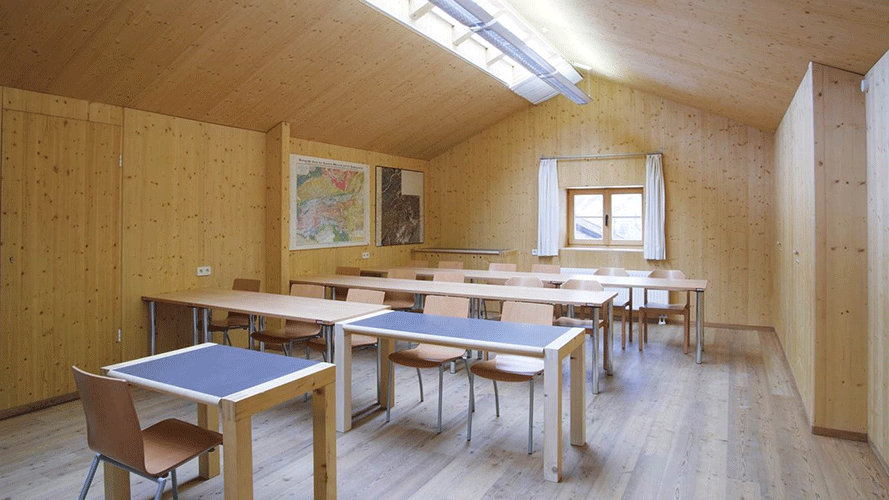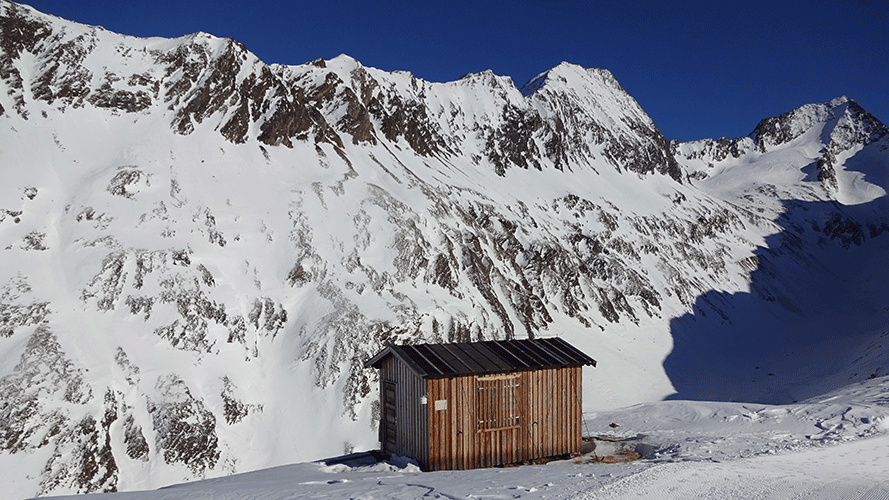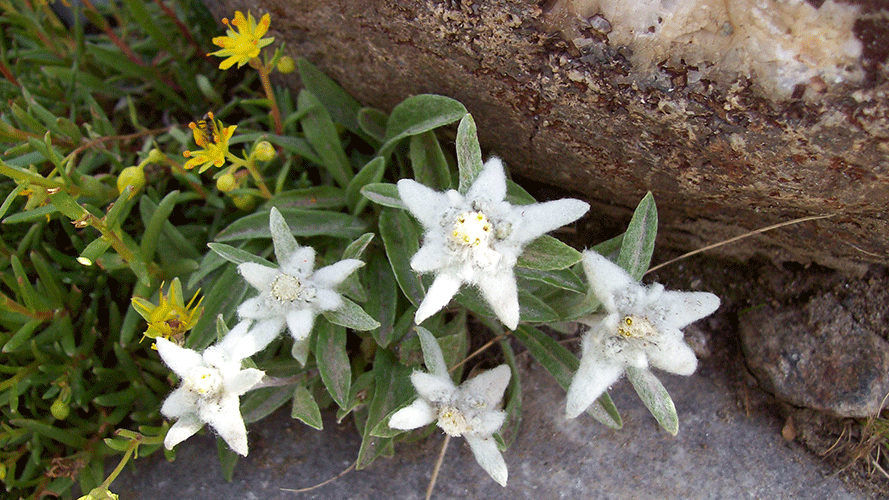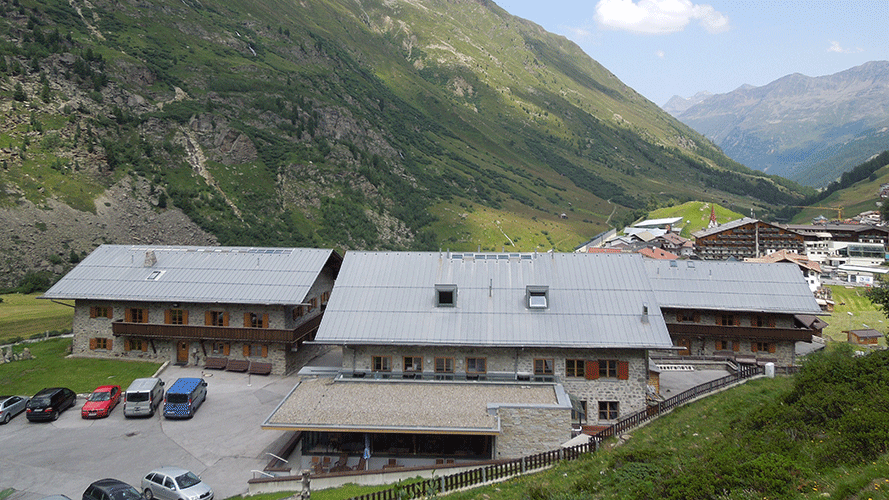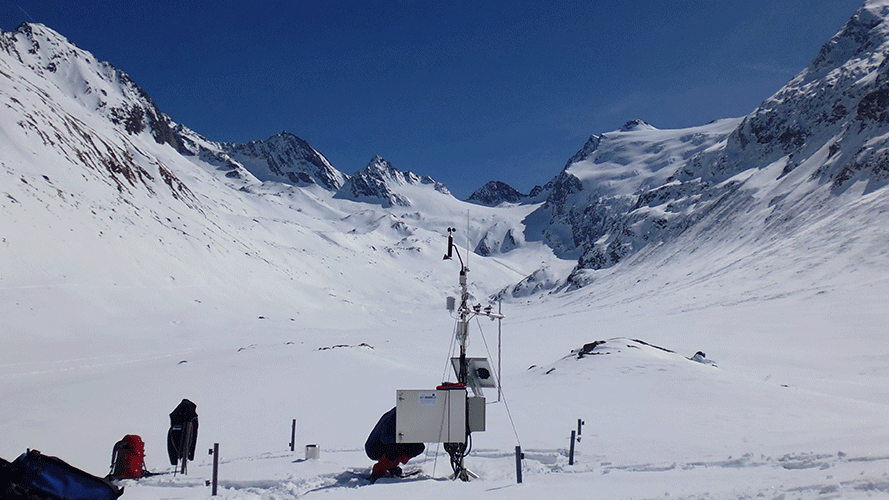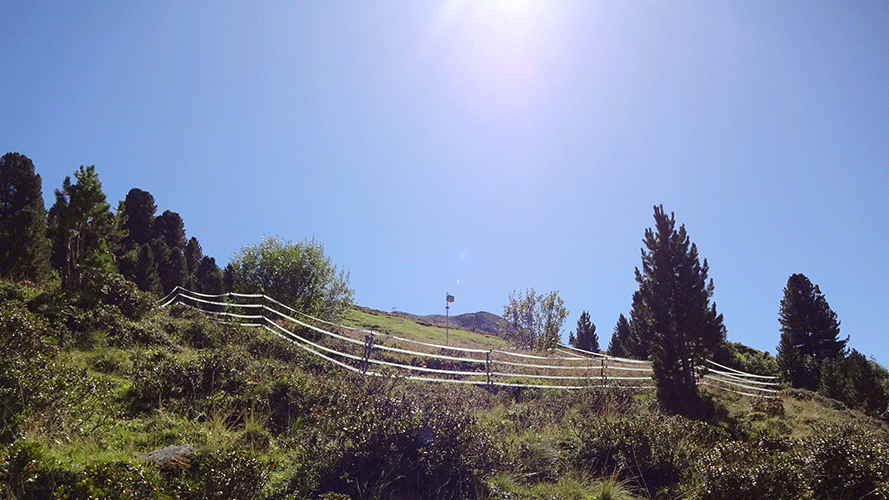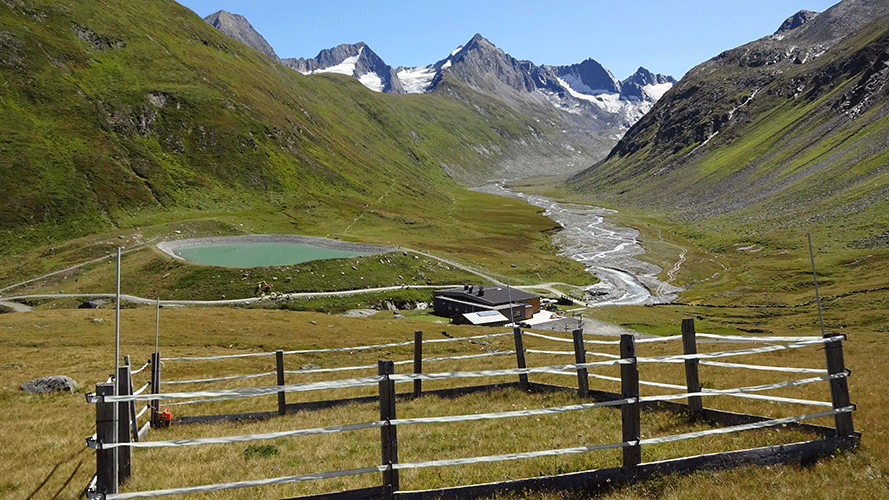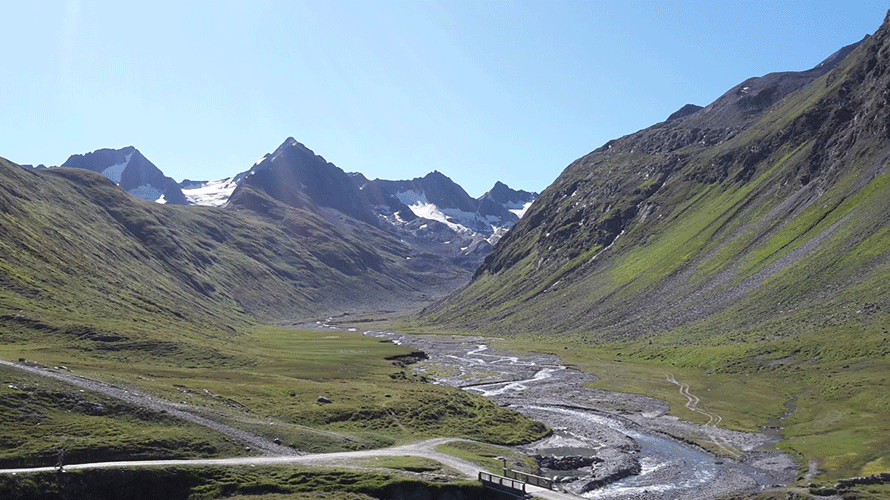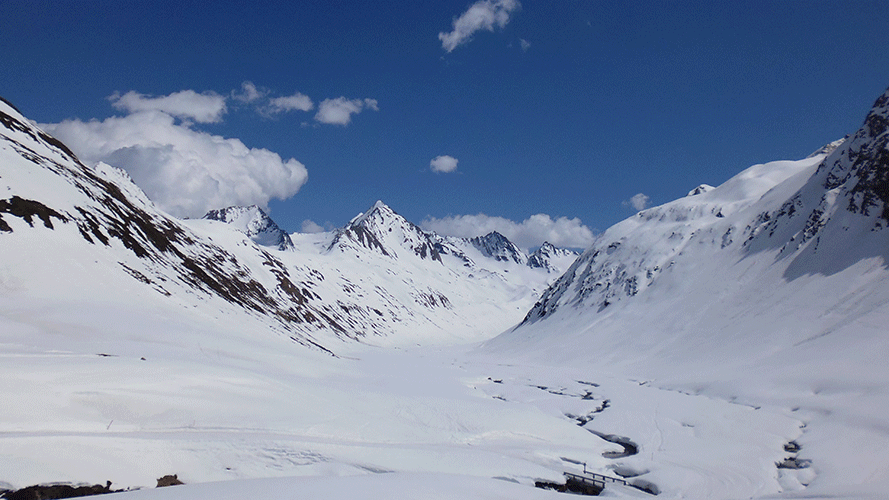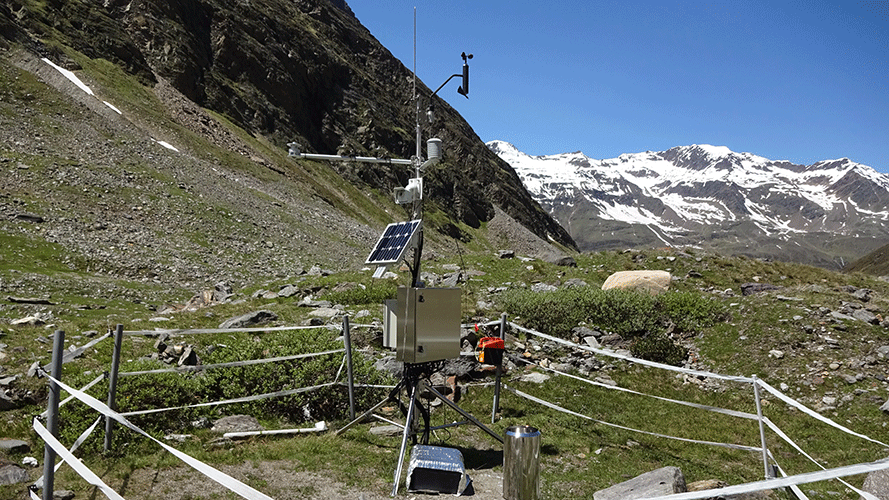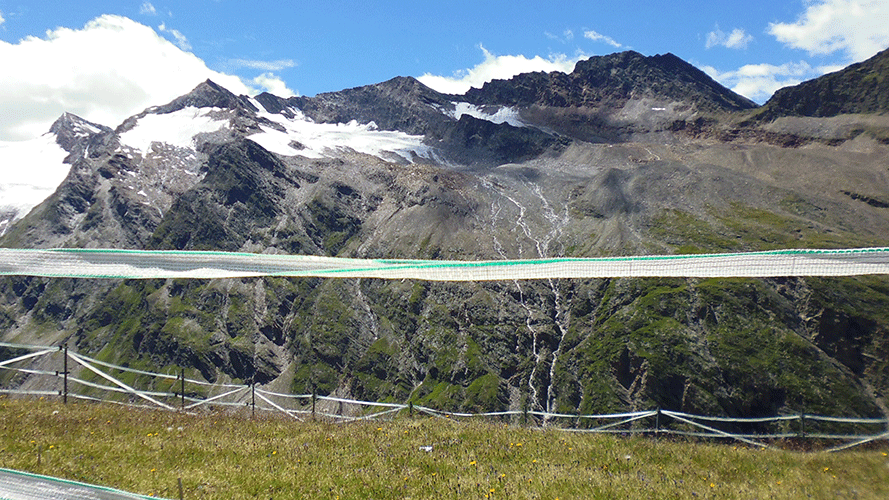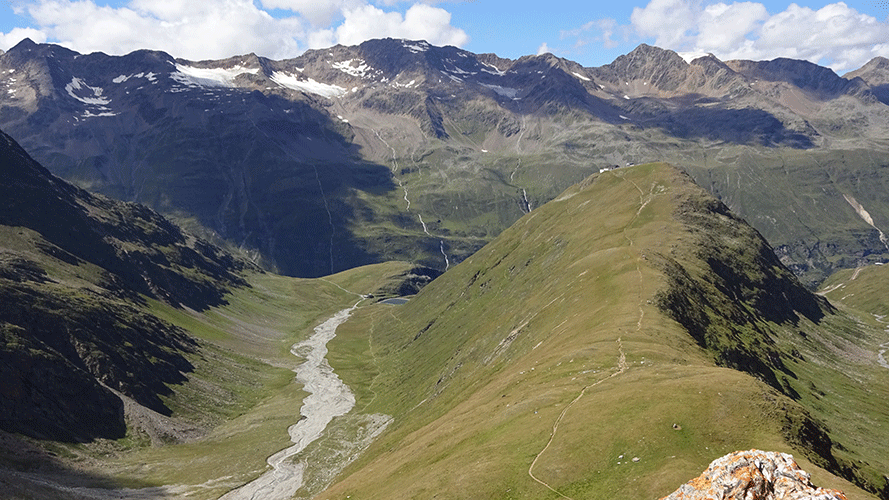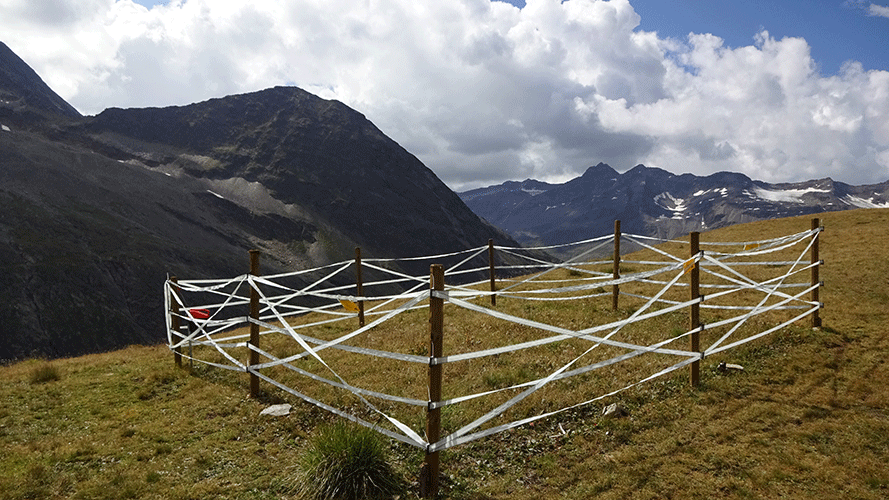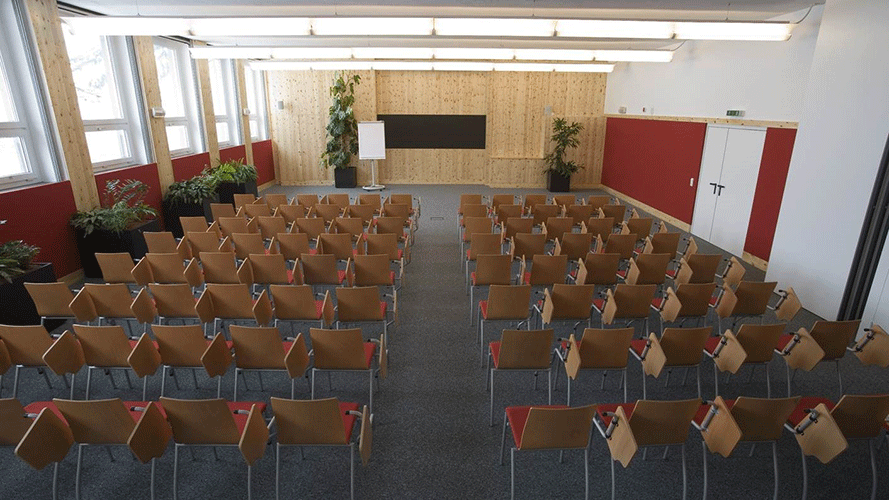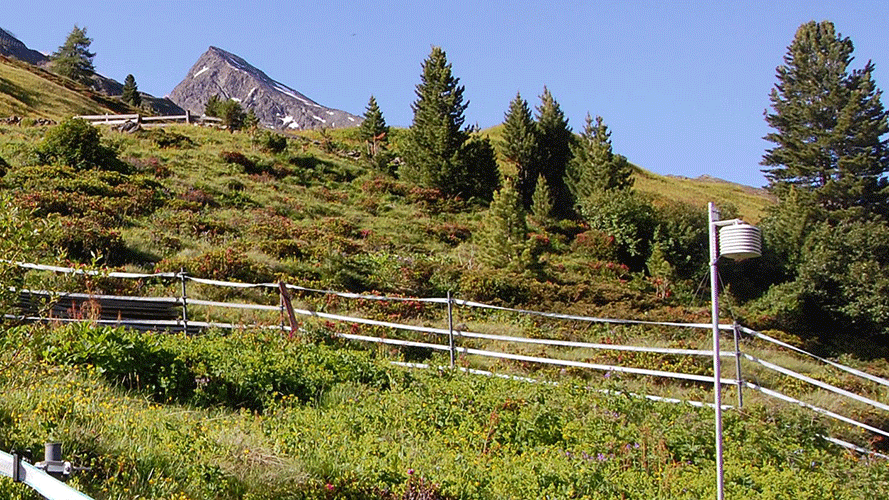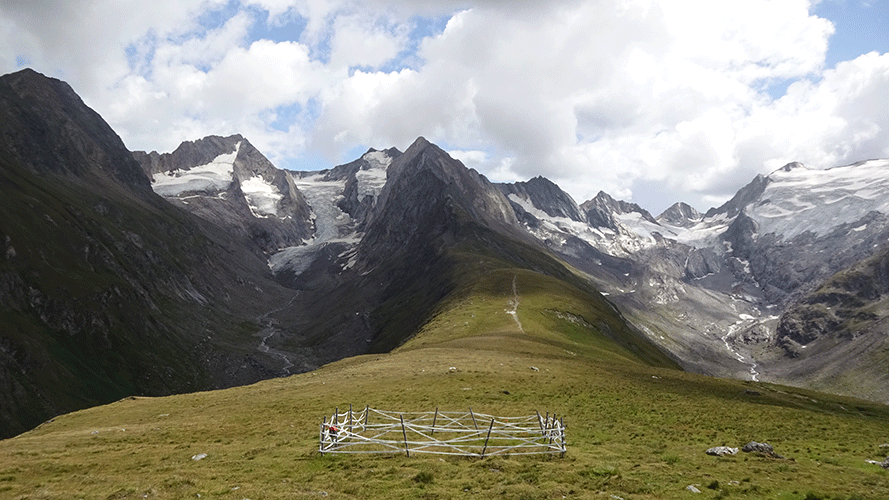Alpine Research Station Obergurgl
The Alpine Research Station Obergurgl was founded in 1951 and has a long research tradition in various disciplines. There is extensive monitoring infrastructure installed on various locations in the area south of Obergurgl, covering an altitudinal gradient of 1,900 to 2,800 m a.s.l. This infrastructure contains 2 weather stations in the Rotmoos valley, 11 smaller stations measuring air and soil temperature and humidity as well as 20 monitoring locations for long-term vegetation and arthropod fauna survey. In the Rotmoos stream, water level and conductivity is monitored.
At the University Center Obergurgl, a weather station of the Austrian federal Institute for Meteorology and Geodynamics (ZAMG), a pollen trap, a GPS receiver and various other measuring equipment of federal institutions are installed.
The University Centre Obergurgl is accommodating scientists, students and visitors for conferences and courses but also houses research infrastructure. Besides rooms for overnight stays and a dining hall, there is a lecture hall and seminar rooms, a small laboratory and a library. Seminar rooms are equipped with microscopes and a herbarium and there is working and safety equipment for field trips.
Long-term research projects in Obergurgl focus on the vegetation changes over time under grazing exclusion, successional patterns of flora and fauna in a glacier foreland as well as the rock glacier in the äußerem Hochebenkar and its runoff.
In recent projects, researchers examine socioeconomic interrelations between agriculture and tourism, the influence of climate change on microbial communities of alpine soils and much more.
The Alpine Research Station Obergurgl is running the LTER (Long-Term Ecosystem Research) site Obergurgl which is part of the LTSER platform Tyrolean Alps.
Links
Recent Projects
- BARDGETT, R.; BAHN, M.; GRIFFITHS, R.; SCHLOTER, M.: Soil microbial community dynamics and biogeochemical cycles under global change: effects of climate and vegetation change in alpine ecosystems. NERC - Natural Environment Research Council
- PAGITZ, K.; ERSCHBAMER, B.; MARGREITER, V.: The Alpine Plant Conservation & Research Programme, Europe. Internationales Kooperationsprojekt, David & Claudia Harding Foundation, Royal Botanic Gardens, Kew
- PEINTNER, U.: MICINSNOW – Microbial interactions in snow-covered habitats. Fonds zur Förderung der wissenschaftlichen Forschung (FWF)
- STOTTEN, R.; LEITINGER, G.: RESULT – RESilience through synergies between agricULTure and tourism. Österreichische Akademie der Wissenschaften (ÖAW)
Recent publications
- Arraiano-Castilho, R., Bidartondo, M.I., Niskanen, T. et al. (2024): Climatic shifts threaten alpine mycorrhizal communities above the treeline. Fungal Ecology 67, https://doi.org/10.1016/j.funeco.2023.101300
- WILKES, M.A., CARRIVICK, J.L., CASTELLA, E. et al. (2023): Glacier retreat reorganizes river habitats leaving refugia for Alpine invertebrate biodiversity poorly protected. Nat Ecol Evol, https://doi.org/10.1038/s41559-023-02061-5
- HARTL, L. et al. (2023): Multi-sensor monitoring and data integration reveal cyclical destabilization of the Äußeres Hochebenkar rock glacier. Earth Surf. Dynam., 11, 117–147, https://doi.org/10.5194/esurf-11-117-2023
- ERSCHBAMER, B., NIEDERFRIENINGER SCHLAG, R., CARNICERO, P. & KAUFMANN, R. (2023): Long-term monitoring confirms limitations of recruitment and facilitation and reveals unexpected changes of the successional pathways in a glacier foreland of the Central Austrian Alps. Plant Ecology, https://doi.org/10.1007/s11258-023-01308-2
- Stotten, R. (2023): The natural domain and its social representation in the community resilience concept. Sustainable Development, 1–13, https://onlinelibrary.wiley.com/doi/10.1002/sd.2681
- Stevens, I.T. et al. (2022): Spatially consistent microbial biomass and future cellular carbon release from melting Northern Hemisphere glacier surfaces. Commun. Earth Environ. 3: 275, https://doi.org/10.1038/s43247-022-00609-0
- SEEBER, J., STEINWANDTER, M., TASSER, E. et al. (2022): Distribution of soil macrofauna across different habitats in the Eastern European Alps. Sci Data 9, 632, https://doi.org/10.1038/s41597-022-01717-4
- BROADBENT A. A. D., BAHN M., PRITCHARD W. J., NEWBOLD L. K., GOODALL T., GIUNTA A., SNELL H. S. K., CORDERO I., MICHAS A., GRANT H. K., SOTO D. X., KAUFMANN R., SCHLOTER M., GRIFFITHS R. I. & BARDGETT R. D. (2022): Shrub expansion modulates belowground impacts of changing snow conditions in alpine grasslands. Ecology Letters 25: 52–64, https://doi.org/10.1111/ele.13903
- TELAGATHOTI, A., PROBST, M., MANDOLINI, E. & PEINTNER, U. (2022): Mortierellaceae from subalpine and alpine habitats: new species of Entomortierella, Linnemannia, Mortierella, Podila and Tyroliella gen. nov. Studies in Mycology 103: 25–58, https://doi.org/10.3114/sim.2022.103.02
- ULLRICH, C., FRANCIS, O., TABIBI, S., & TITZ, H. (2022): Geodetic climate research in the Austrian Alps, EGU General Assembly 2022, Vienna, Austria, 23–27 May 2022, EGU22-9943, https://doi.org/10.5194/egusphere-egu22-9943
- ZAHS, V., WINIWARTER, L., ANDERS, K., WILLIAMS, J.G., RUTZINGER, M. & HÖFLE, B. (2022): Correspondence-driven plane-based M3C2 for lower uncertainty in 3D topographic change quantification. ISPRS Journal of Photogrammetry and Remote Sensing 183, 541–559, https://doi.org/10.1016/j.isprsjprs.2021.11.018
- ARRAIANO-CASTILHO, R., BIDARTONDO, M. I., NISKANEN, T., CLARKSON, J. J., BRUNNER, I., ZIMMERMANN, S., SENN-IRLET, B., FREY, B., PEINTNER, U., MRAK, T. & SUZ, L. M. (2021): Habitat specialisation controls ectomycorrhizal fungi above the treeline in the European Alps. New Phytologist 229:5, 2901–2916, http://dx.doi.org/10.1111/nph.17033
- BALOH, P., HANLON, R., ANDERSON, C., DOLAN, E., PACHOLIK, G., STINGLMAYR, D., BURKART, J., FELGITSCH, L., SCHMALE III, D.G. & GROTHE, H. (2021): Seasonal ice nucleation activity of water samples from alpine rivers and lakes in Obergurgl, Austria. Science of the Total Environment 800 (2021) 149442, https://doi.org/10.1016/j.scitotenv.2021.149442
- BROADBENT A. A. D., SNELL H. S. K., MICHAS A., PRITCHARD W. J., NEWBOLD L., CORDERO I., GOODALL T., SCHALLHART N., KAUFMANN R., GRIFFITHS R. I., SCHLOTER M., BAHN M. & BARDGETT R. D. (2021): Climate change alters temporal dynamics of alpine soil microbial functioning and biogeochemical cycling via earlier snowmelt. The ISME Journal, https://doi.org/10.1038/s41396-021-00922-0
- P. (2021): Euphrasia ultima, a new locally endemic diploid species from the Ortler/Ortles range (Italy), is a close relative of widespread allotetraploid E. minima. Plant Biosystems - An International Journal Dealing with all Aspects of Plant Biology, DOI: 10.1080/11263504.2021.1947409
- KAUFMANN R., MAYER R., SCHALLHART N. & ERSCHBAMER B. (2021): Effects of Climate Change vs. Grazing Exclusion on Species Diversity Over 18 Years Along an Elevation Gradient in the European Alps. Frontiers in Ecology and Evolution 9, Article 640103, https://www.frontiersin.org/articles/10.3389/fevo.2021.640103/full
- MARGREITER, V., WALDE, J. & ERSCHBAMER, B. (2021): Competition-free gaps are essential for the germination and recruitment of alpine species along an elevation gradient in the European Alps. Alpine Botany 131, 135–150, http://dx.doi.org/10.1007/s00035-021-00264-9
- SCHATZ H. (2021): A new species of Brachychthoniidae (Acari: Oribatida) from the Eastern Central Alps (Austria, Tyrol), with the proposal of a new genus. Acarologia 61(2): 365-379; DOI 10.24349/acarologia/20214436
- STOTTEN R., SCHERMER M. & WILSON G. A. (2021): Lock-ins and community resilience: Two contrasting development pathways in the Austrian Alps. Journal of Rural Studies 84, 124–133, https://doi.org/10.1016/j.jrurstud.2021.04.001
- TELAGATHOTI A., PROBST M., KHOMENKO I., BIASIOLI F. & PEINTNER U. (2021): High-Throughput Volatilome Fingerprint Using PTR–ToF–MS Shows Species-Specific Patterns in Mortierella and Closely Related Genera. J. Fungi 7:66, https://doi.org/10.3390/jof7010066
- TELAGATHOTI A., PROBST M. & PEINTNER U. (2021): Habitat, snow-cover and soil pH, affect the distribution and diversity of Mortierellaceae species and their associations to bacteria. Frontiers in Microbiology 12, https://doi.org/10.3389/fmicb.2021.669784
- ULRICH V., WILLIAMS J. G., ZAHS V., ANDERS K., HECHT S. & HÖFLE B. (2021): Measurement of rock glacier surface change over different timescales using terrestrial laser scanning Point clouds. Earth Surf. Dynam. 9, 19–28, https://doi.org/10.5194/esurf-9-19-2021
- WILLIAMS J. G., ANDERS K., WINIWARTER L., ZAHS V. & HÖFLE B. (2021): Multi-directional change detection between point clouds. ISPRS Journal of Photogrammetry and Remote Sensing 172, 95–113, https://doi.org/10.1016/j.isprsjprs.2020.12.002
For more publications please visit the bibliography.
